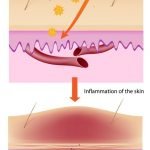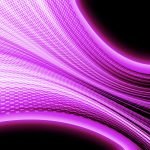Scientists Develop Bioelectric Stimulator for Damaged Nerves
Node Smith, ND
A collaborative team from Northwestern University and Washington University School of Medicine have created what they are terming the first example of “bioelectronic medicine.1” The device is a biodegradable implant that works to increase the rate of nerve regeneration and better the healing of damaged nerves.
Development of the device
The development of the device has brought together both material scientists and engineers as well as neurosurgeons. The device works by giving regular electrical pulses to damaged peripheral nerves. The researchers have been using a rat model, and implanting the device after a surgery to accelerate the regeneration of damaged nerves in legs and to enhance recovery of muscle function and strength. The tests have been largely successful.
Intention of this device
The intention of this device, and the use of technology such as this in the future is to deliver transient treatment of a specific area without the use of pharmaceuticals or permanent implants.
“These engineered systems provide active, therapeutic function in a programmable, dosed format and then naturally disappear into the body, without a trace,” said Northwestern’s John A. Rogers, a pioneer in bio-integrated technologies and a co-senior author of the study. “This approach to therapy allows one to think about options that go beyond drugs and chemistry.”
Device has yet to be tested in humans
The device has yet to be tested in humans, but current success with rat models does foreshadow this option for patients with nerve injury in the near future. Currently, electrical stimulation during surgery is standard practice for nerve damage. However, until now, the there has been a lack of ability to continue this stimulation throughout the recovery period.
“We know that electrical stimulation during surgery helps, but once the surgery is over, the window for intervening is closed,” said co-senior author Dr. Wilson “Zack” Ray, an associate professor of neurosurgery, of biomedical engineering and of orthopedic surgery at Washington University. “With this device, we’ve shown that electrical stimulation given on a scheduled basis can further enhance nerve recovery.”
Device is a thin, flexible implant
The device itself is a thin, flexible implant that can be wrapped around a damaged nerve to deliver electrical impulses at specific intervals throughout a certain time period before it degrades inside the body. The implant is powered and controlled via wireless transmitter that works a lot like a cell phone-charging mat.
Study looked at using device to aid with the healing process of injured sciatic nerves
The rat study looked at using this device to aid with the healing process of injured sciatic nerves. The device was used one hour per day for one, 3 or 6 days, with a control group that received no stimulation at all.
The findings
The findings were that any stimulation at all aided with increased healing and gain of muscle strength and control over a 10-week period. The more stimulation the rats received the faster their rate of recovery seemed to be. And no adverse complications were seen with the reabsorption of the device into the bodies of the subjects.
Source:
- Koo J, MacEwan MR, Kang SK, et al. Wireless bioresorbable electronic system enables sustained non-pharmacological neuroregenerative therapy. Nature Medicine. Oct. 8, 2018. DOI: 10.1038/s41591-018-0196-2
 Node Smith, ND, is a naturopathic physician in Portland, OR and associate editor for NDNR. He has been instrumental in maintaining a firm connection to the philosophy and heritage of naturopathic medicine among the next generation of docs. He helped found the first multi-generational experiential retreat, which brings elders, alumni, and students together for a weekend camp-out where naturopathic medicine and medical philosophy are experienced in nature. Four years ago he helped found the non-profit, Association for Naturopathic ReVitalization (ANR), for which he serves as the board chairman. ANR has a mission to inspire health practitioners to embody the naturopathic principles through experiential education. Node also has a firm belief that the next era of naturopathic medicine will see a resurgence of in-patient facilities which use fasting, earthing, hydrotherapy and homeopathy to bring people back from chronic diseases of modern living; he is involved in numerous conversations and projects to bring about this vision.
Node Smith, ND, is a naturopathic physician in Portland, OR and associate editor for NDNR. He has been instrumental in maintaining a firm connection to the philosophy and heritage of naturopathic medicine among the next generation of docs. He helped found the first multi-generational experiential retreat, which brings elders, alumni, and students together for a weekend camp-out where naturopathic medicine and medical philosophy are experienced in nature. Four years ago he helped found the non-profit, Association for Naturopathic ReVitalization (ANR), for which he serves as the board chairman. ANR has a mission to inspire health practitioners to embody the naturopathic principles through experiential education. Node also has a firm belief that the next era of naturopathic medicine will see a resurgence of in-patient facilities which use fasting, earthing, hydrotherapy and homeopathy to bring people back from chronic diseases of modern living; he is involved in numerous conversations and projects to bring about this vision.








